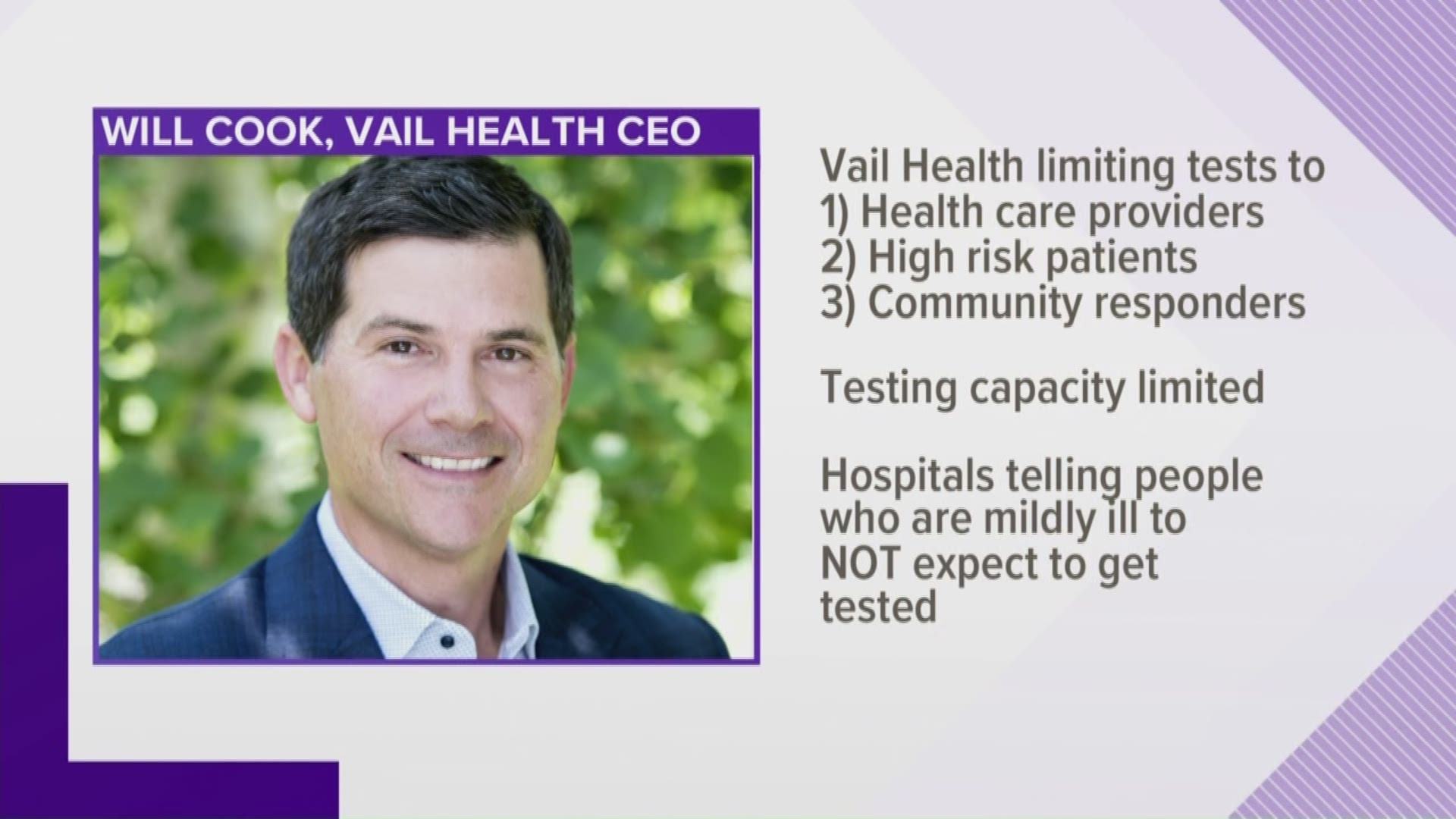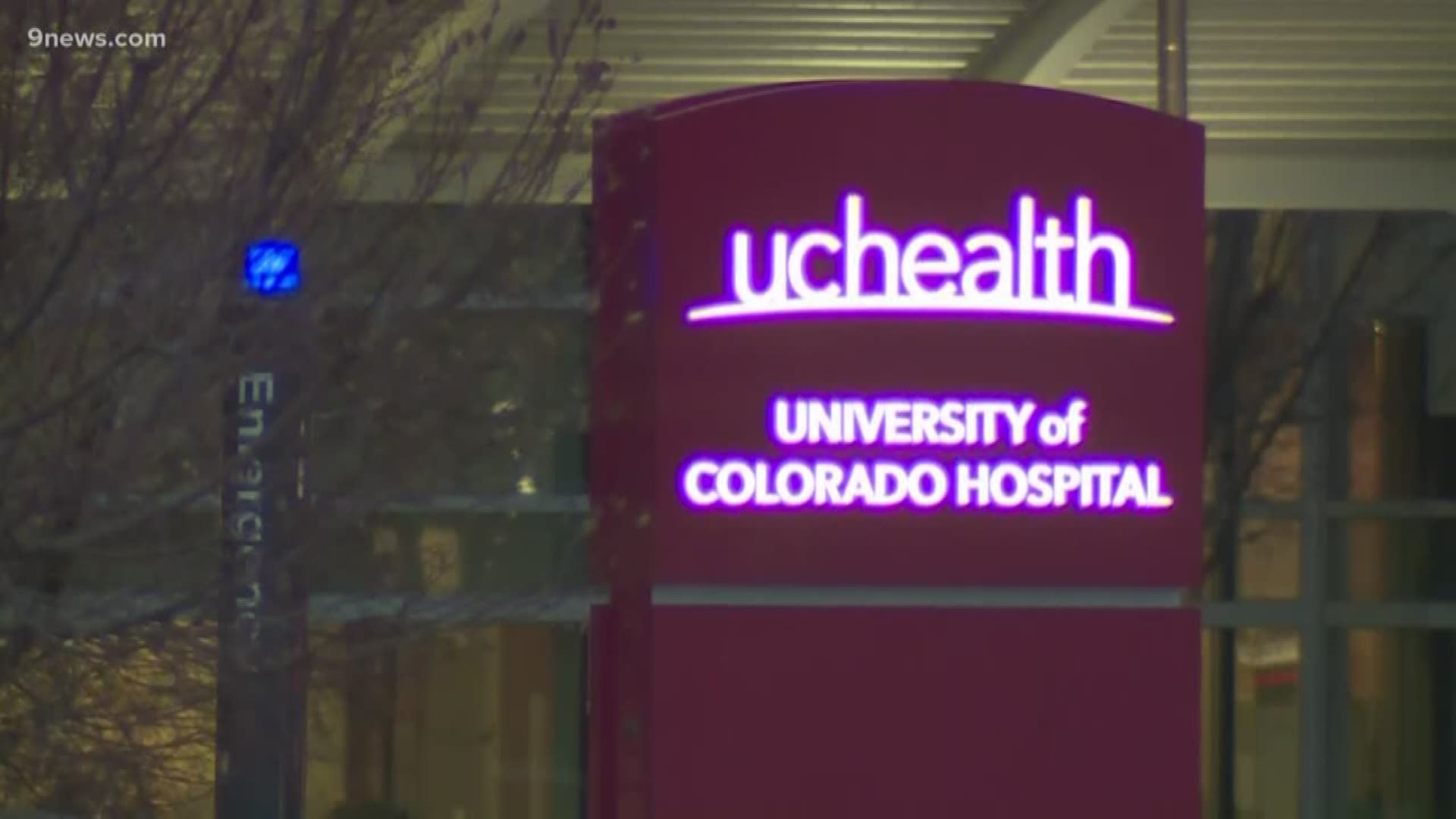VAIL, Colo. — In some of the strongest wording to come out of Colorado’s mountain communities to date, the president and CEO of Vail Health told the public Wednesday the virus that causes COVID-19 has firmly established itself in Eagle County.
“It is everywhere here; we just don’t have the test results to prove it, and we won’t anytime soon,” wrote Will Cook. “We need to take this seriously, NOW.”
Cook said it is his belief there are likely “hundreds if not thousands of people” who have the novel coronavirus in the Eagle River Valley.
NUMBERS: Colorado COVID-19 cases: March 16-18
Adding to the problems in the Vail area, Cook said, is the continued inability to handle the tests Vail Health is sending to the state lab and other commercial labs.
“We have all been told it takes 24-48 hours to get test results, but it’s taking 3-5 days or more, and it’s getting worse,” wrote Cook. “We have 400 local tests awaiting results, and we expect many of them to be positive.”
He said his doctors are sending 70 additional samples to labs per day.
“Every person and family in this Valley must start social distancing NOW,” he concluded. “If we don’t commit to disciplined social distancing now, our 56-bed Vail Health Hospital will be overflowing within 2-4 weeks.”
The Colorado Hospital Association (CHA) issued a statement Wednesday saying that although the state's data currently reports 20 hospitalizations, "our hospitals report having many more hospitalized patients who are likely COVID-19 positive but are still awaiting test results."
CHA said Colorado hospitals have moved from a mitigation response to the COVID-19 outbreak to a surge response. This means that hospitals have seen a marked increase in the number of patients presenting with respiratory illness who need hospitalization and further testing.
Those hospitals are putting specific plans in place, which will include steps to address three key components – supplies, staff and space. Their work includes:
- Personal protective equipment (PPE) conservation.
- Postponing elective procedures.
- Expanding/ refashioning facilities to create additional critical care beds or negative pressure rooms.
- Securing alternative discharge options so that patients who no longer need acute hospitalization can be moved out of the hospital.
- Increasing staffing.
"As the spread of COVID-19 continues, we anticipate that more Colorado hospitals will transition to surge response and will be making these types of changes," CHA said.
“[Surge] phase is actually one of the most dreaded phases of any epidemic,” said Dr. Jason Persoff, Assistant Director of Emergency Preparedness at the University of Colorado Hospital (UCHealth).
“Because when we talk about flattening the curve, that’s what we’re really talking about. When we talking about the cases are rising, its -- how fast does that happen? In the surge phase it happens really rapidly. If we’re lucky and we flattened the curve through all the social distancing we’ve done so far, then there’s a possibility we’ve made an impact.”
Persoff said UCHealth has seen an increase in COVID-19 cases or suspected cases. He said the hospital already had a stockpile of personal protective equipment (PPE) from a few years ago, when the team was preparing for possible Ebola cases. Still, they’re carefully managing what they do have to be used only for appropriate cases.
Other hospitals face PPE shortages. And Governor Jared Polis announced on Monday that state supplies of PPE were deployed.
Having enough space to treat COVID-19 and other patients is also a concern for hospitals.
“At present, we are not at capacity,” Persoff said. “The bigger capacity issue is going to come when we’re dealing with negative airflow rooms and ICU rooms. Those are going to be eventually a big crisis.”
Hospitals, like his, have either limited or stopped elective surgeries and turned to telehealth options when possible to keep more beds open.
On Wednesday, Children’s Hospital Colorado announced temporary closures for some Outpatient and Urgent Care facilities, and TherapyCare facilities, as well as increased screening measures, visitation restrictions, and having non-essential staff work remotely.
Hospitals are also considering re-purposing other parts of their buildings to add capacity, if needed, in the future.
Treating more patients also requires a healthy and available staff.
“The analogy we’re most often using now is, we’re at the beginning stages of a marathon,” said Dr. Andrew French, the an emergency medicine physician and Chief Medical Officer at St. Anthony North Health Campus, with Centura Health.
“So be careful not to sprint too hard right now because we know there’s many weeks, potentially many months to come of this pandemic. And we need to keep focus on moving at the right pace, keeping our staff safe. Keeping our staff healthy, physically and mentally.”
The Colorado Hospital Association said people with mild symptoms should first talk with a primary care provider and seek testing at a community testing site – not at the hospital ER. This helps hospitals preserve precious resources like PPE, staff and testing kits for those patients who may have severe illness.
COVID-19 is a novel coronavirus that first appeared in Wuhan, China in late 2019. This new strain of coronavirus began popping up in the United States in February.
Symptoms of COVID-19 can include fever, cough and breathing trouble. Most develop only mild symptoms. But some people, usually those with other medical complications, develop more severe symptoms, including pneumonia, which can be fatal.
SUGGESTED VIDEOS: COVID-19 Coronavirus



